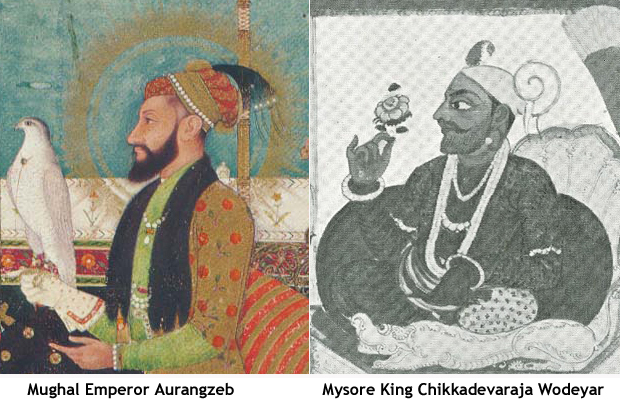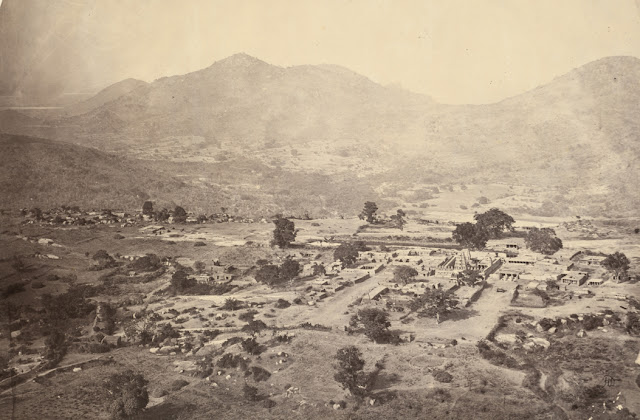Aurangzeb’s friendly relations with Chikkadevaraja Wodeyar, Mysore Kingdom’s most successful independent Hindu King

Research and author: Ameen Ahmed ~~~ Source: Wiki Commons Introduction The Hindu Wodeyar dynasty formed the Mysore kingdom in 1399. 1 It ruled the region until India’s independence, with a couple of breaks in between, from 1760 to 1799 and 1831 to 1881. Established as a subsidiary of the Karnata Empire (popular as Vijayanagar Empire), the Wodeyars began to spread their wings after Vijayanagar was sacked at the battle of Talikoti in 1565. 2 During its long existence it saw the rise and fall of many empires, including the Mughals and Marathas. Chikkadevaraja Wodeyar who ruled from 1673 until his death in 1704, is seen as its most successful king. This essay highlights how this far sighted ruler developed and sustained friendship with Aurangzeb to not only check their common enemy the Marathas, but also to reform his kingdom. Mysore King Chikkadevaraja Wodeyar built or repaired many Hindu temples in his reign, like this Shvetha Varaha Swamy temple at Mysore. Pictur...
